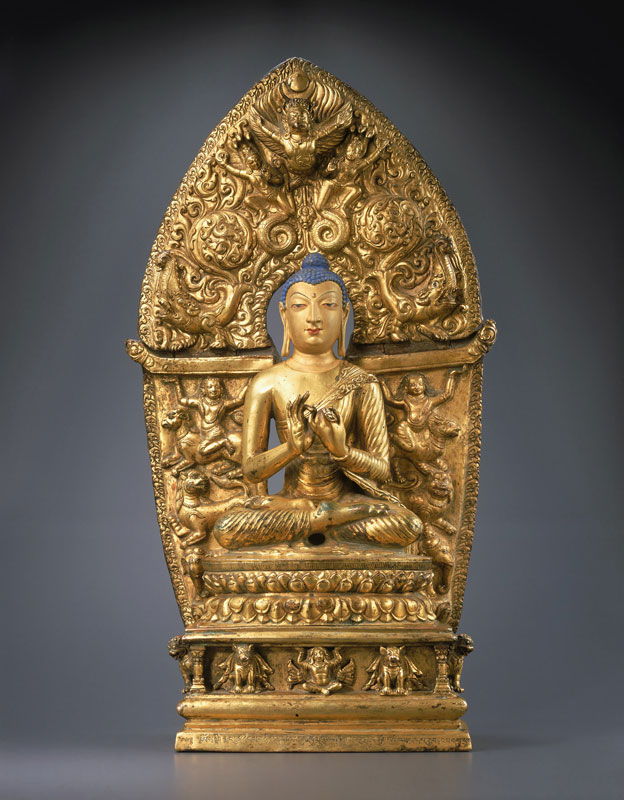previous image || Tracing the Reception Adaptation main article || next image
Tracing the Reception
and Adaptation of Foreign
esthetic elements in Tibetan sculpture
Fig. 14: 1664
Royal Reconsecration of Kashmiri Buddha:
Seated Buddha on Lion throne
Kashmir
8th –9th c.
gilt copper with pigment
height 47 cm.
The height of the Buddha statue as originally cast on its lion base is 47 cm, while the total height of the prabha added in ca. 1663-64 is 67 cm.(from ground to apex of the prabha). The seated Buddha himself measures 29 cm, gilt copper with pigment. Made to honor the memory of the Mustang Raja, A mgon bsam grub rab brtan. The author has studied and translated the inscription as personal research in 2004. Inscription
on statue: Translation
: To honor the memory* of the glorious Ah mgon bSam grub rab brtan, in the hopes that Nyi Zla mother and child(ren) and all sentient beings may attain the superior and the mundane levels of spiritual realization, the Nepalese workmanship (i.e. the creation of the prabha) is the achievement of the master artist Su Dza dzo ti , the sculptor of infinite prowess. May there be praise to Buddha who is most precious**, (he who is) the noble son in the center of the golden mountain of beautiful offerings, he who has totally perfected the practices leading to enlightment as the result of the karma of birth in the center of the ocean combining the two excellent conditions ( = wealth and religion, ie. Shakyamuni Buddha was born as prince Siddhartha and he had religious aspirations). May there be happiness! Notes
: **literally, the mighty sage of precious particles all piled up together". |
previous image || Tracing the Reception Adaptation main article || next image
